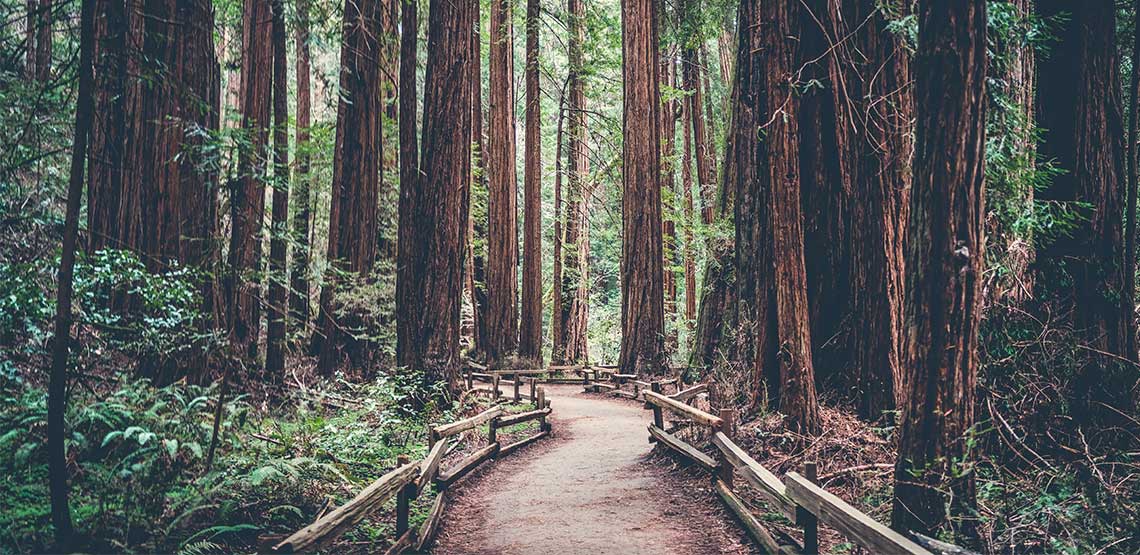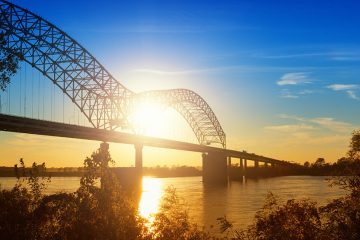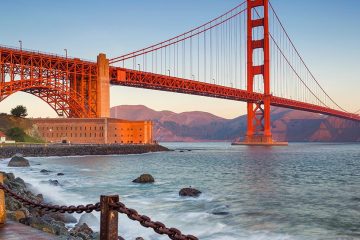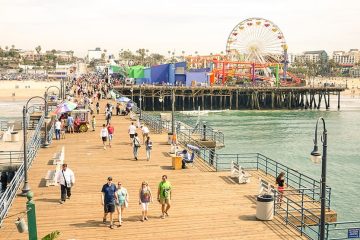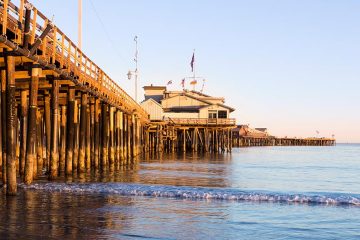Dreaming of California? Here's the Travel Guide to Make It a Reality!
The Coast Awaits
There’s a reason California is the most populous state in the United States. With its year-round warm climate and varied geography, the state is welcoming to everyone and offers a little bit of everything. There’s no bad time to visit, it all depends on what you want to do and see.
California has some of the most popular and well-known beaches in the United States, in addition to a variety of treasured national parks. You can surf in the Pacific Ocean, hike through the desert or ski down the sides of mountains. And don’t forget about all the California theme parks there are across the state!
It’s a land of opportunity — the site of both the Gold Rush and the rise of Hollywood.
There’s so much to choose from, it’s hard to know where to start when it comes to California travel, so we’ve put together this handy guide to help you prepare for your west coast adventure. Read on to figure out what to see and expect, taking into consideration cost and peak visiting times.
San Francisco Bay Area
One of the most densely populated areas in California, the San Francisco Bay Area packs a ton of amazing attractions into a relatively small space. In the city itself, there is of course the iconic Golden Gate Bridge and enormous Golden Gate Park — the largest urban park in the country.
Famed Alcatraz Island, former home to some of the most notorious criminals in the United States, sits just off shore and is open for tours. No trip to San Francisco would be complete without a visit to Fisherman’s Wharf either, where you can eat clam chowder out of a sourdough bread bowl and watch the sea lions bask on the pier docks.
Just across the bridge, you can also visit the Redwood National and State Parks, standing in awe of their enormous size and resilience.
In the northern part of the Bay Area, lies California’s wine country — Napa and Sonoma. There you’ll find an immense number of vineyards and wineries, which can be toured on the scenic Napa Valley Wine Train.
Because the Bay Area is mostly surrounded by water, it can get quite chilly in the winter with temperatures reaching into the mid-40s. However, on average, San Francisco stays at around 70 degrees for the rest of the year, although it can get quite windy and rainy in the winter and spring.
Therefore, those are the best times to visit, when room rates are low and airfares are cheap. You’ll want to save as much as possible before visiting the Bay Area as it has now become one of the most expensive places to live (or visit) in America.
Hotels average $200 USD per night and lunch can set you back about $16 USD per person.
Monterey & Big Sur
Big Sur boasts the most scenic drive in the state, and is considered one of the best vacation spots in the US. Running along the coast down the Pacific Coast Highway, you’ll get a breathtaking view of the ocean on one side and towering mountains on the other.
As you approach Monterey, you’ll drive right through Carmel-by-the-Sea where kids can ogle real-life fairy tale cottages built in the 1920s.
Just north of that is the 17-Mile Drive in Pebble Beach. One of the most beautiful coastal areas of California, you’ll drive past enormous mansions, luxury resorts and a world-renowned golf course.
Monterey Bay is home to Cannery Row, the site of John Steinbeck’s novel of the same name. These days it’s home to dozens of boutique hotels and the Monterey Bay Aquarium — an impressive collection of marine life and exhibits.
While you’re at it, be sure to take a whale-watching tour, when it’s in season, to look for gray whales, orcas and dolphins.
Spring is usually the best time to visit the area when it’s less crowded with tourists. However, fall is the warmest time part of the year for Monterey, with temperatures reaching the mid-70s during the day.
In general, the prices are similar to that of San Francisco, although hotels are slightly cheaper. Attractions range from $10-60 USD and meals are about the same as the Bay Area.
Southern Charms and Sizzling Heat Despite a diversity of cultures and geography, the southeast U.S. is warm - in both temperature and temperament. Sweeping...
Southern California
Southern California is the most populous area of the state and is full of things to do and see. Be sure to plan to spend lots of time here when you visit California!
Santa Barbara has great surfing, beautiful beaches and an enchanting downtown shopping area. Anaheim has the happiest place on Earth, Disneyland, and is a short way from artsy beach towns, Laguna Beach and Huntington Beach.
As the biggest county in the state (in terms of population), Los Angeles has a seemingly endless number of attractions and beaches. A visit to the Hollywood Walk of Fame and Graumann’s Chinese Theatre are essential for movie lovers and for those who are looking to visit LA on a budget (plus there are plenty of cheap LA hotels to base your stay at).
You can see the Hollywood sign from the Griffith Observatory or along historic Sunset Boulevard. Santa Monica and Venice beaches are the most frequented by tourists, but you’ll have better luck finding a patch of sun and some quiet time if you try out Zuma, Manhattan or Hermosa beaches.
San Diego also has tons to do including a number of theme parks like SeaWorld and Legoland, in addition to a highly regarded zoo. La Jolla beach is small in comparison to other California beaches, but has become one of the most photographed in Southern California due to its picturesque quality that rivals Hawaiian beaches.
Southern California is much hotter than most of the rest of the state, despite being near the ocean. Temperatures can range from the mid-80s along the coast and 100s in the valleys during the summer. Since it’s such a prime destination for the rest of the country, tourist season never stops, but the weather is most pleasant in the fall around August and September.
Prices generally dip during this time and at the end of winter, and are much more affordable than the other areas. This is largely due to the diversity of the city and how spread out it is.
You can find decent hotels for around $150 USD a night and Airbnb’s are prolific across the region.
Mountains & Deserts
Once you get further inland, you’ll find temperature extremes on both sides of the spectrum. California has both mountainous resorts that receive many inches of snow during the winter, and scorching deserts where unique plant life remains year-round.
On the California/Nevada border, Lake Tahoe has nine different ski resorts and plenty of water bound activities to do during the summer. Big Bear Lake offers a similar experience on a smaller scale with rustic lodges aplenty.
There’s also the Mountain High Resort near Mt. Baldy, which — in addition to skiing and snowboarding — has tubing and sledding. Winter resort trips can get pricey when you consider lodging, lift tickets and equipment rentals, so expect to spend in the thousands for a few days’ stay.
Probably the most famous (and largest) mountain resort in California is the Mammoth Mountain Ski Area. Skiing and snowboarding professionals come here to practice their craft and also compete on the half pipes.
Bordering Mammoth on the west is Yosemite National Park, one of the most surreal places in the USA. It’s here where you can view magnificent waterfalls and towering Sequoia trees. One of the top visited parks in the United States, Yosemite books up way in advance.
When it comes to things to do in Yosemite, summer is peak season (from May to September). If you can visit before or after this time you’ll have a better time finding a campsite or hotel room.
Joshua Tree National Park also gets frequent visitors throughout the year, although because of it bordering the Mojave Desert, temperatures are rather unbearable during the summertime. Like its name suggests, Death Valley can get particularly bad from May to September, but come springtime, people flock to view all of the wildflowers blooming.
Despite the high temperatures, the deserts are still utilized for hiking, biking and camping, which make them a more budget-friendly option for travelers.



